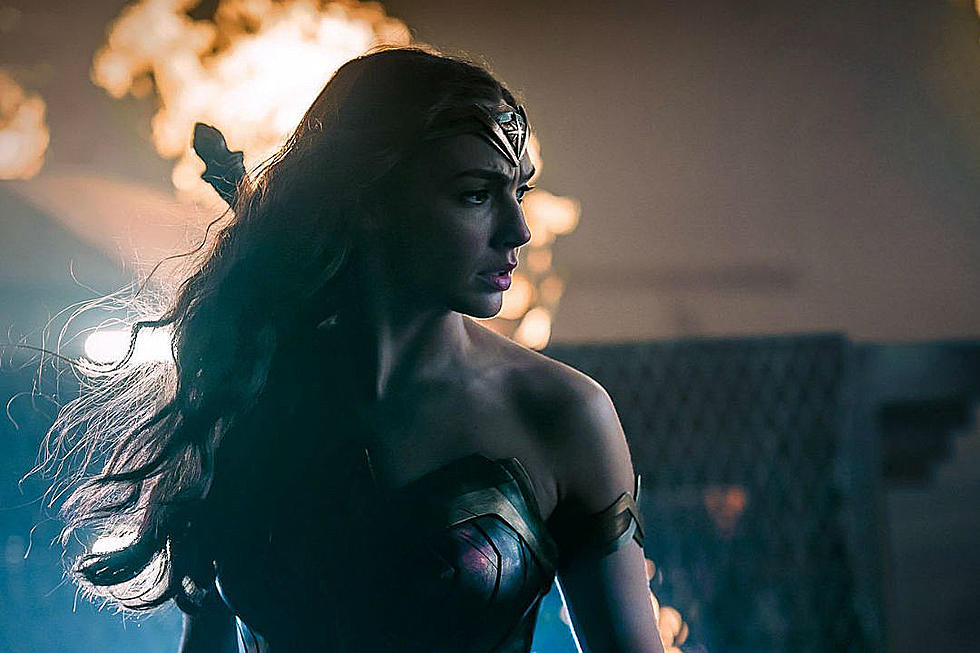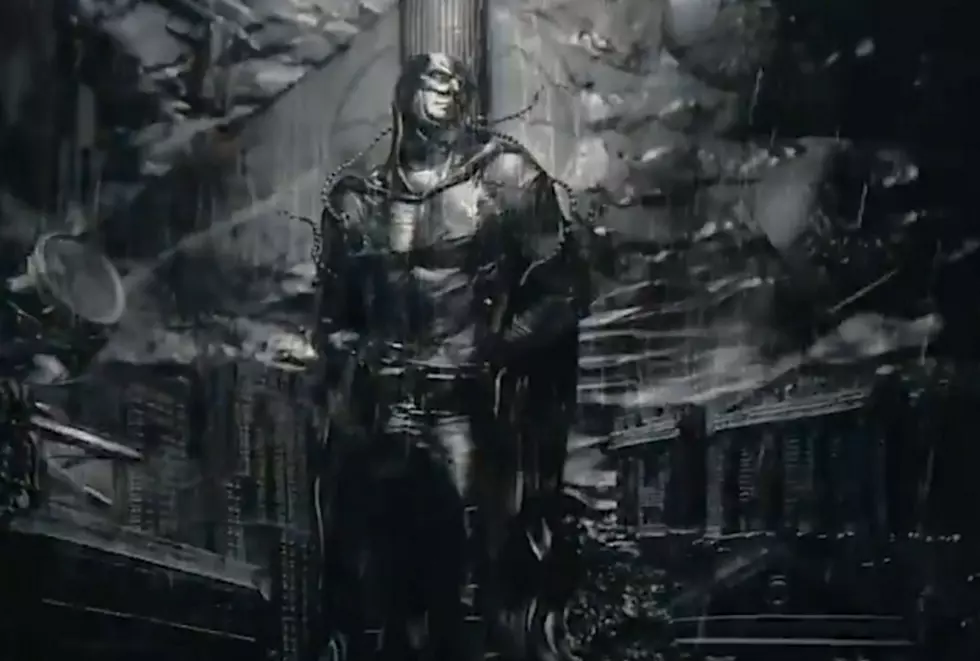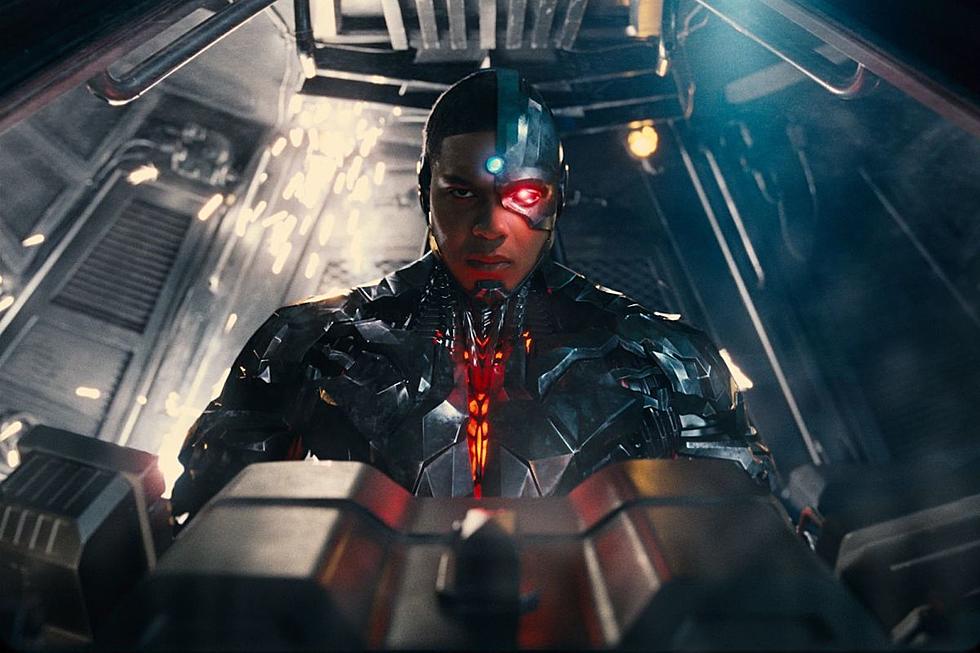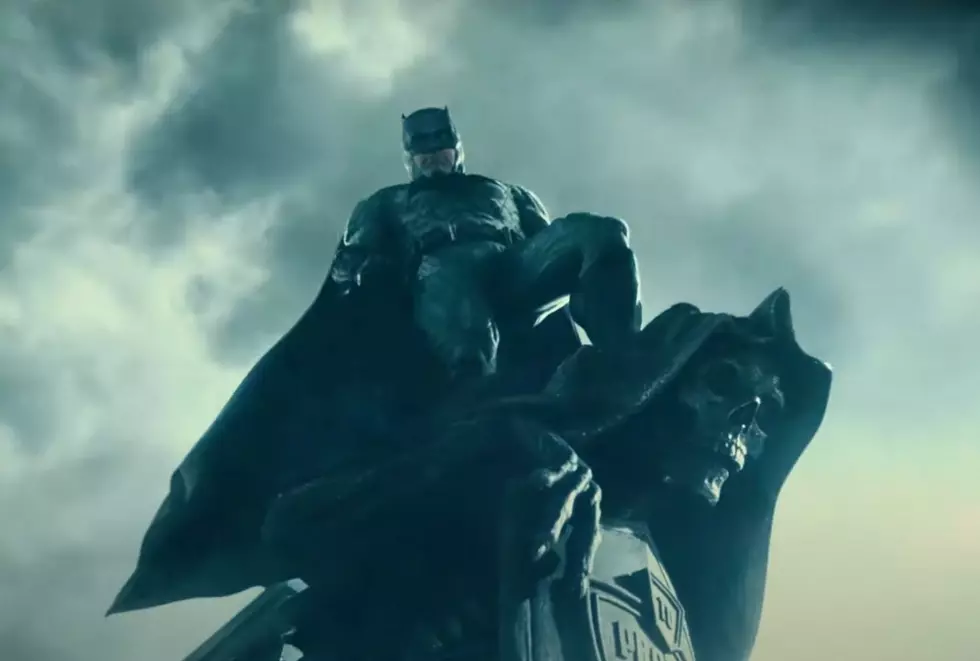
Point/Counterpoint: ‘Justice League’ Is Everything Wrong With Comics

The recently relaunched Justice League is one of the highest profile titles in superhero comics today, and a book that has inspired some strong and disparate feelings at ComicsAlliance. Now that the first arc has wrapped with issue #6, we're taking a point/counterpoint look at the series, with Senior Writer Chris Sims taking aim at its weaknesses, and David Uzumeri stepping up in the other corner to sing its praises. -Laura
By all rights, Justice League should've been great. Its creative team includes Geoff Johns and Jim Lee, two of the top creators (if not the top creators in comics) who have previously done incredible work when given a clean slate to do what they wanted with some of the greatest characters in the history of comic books, and Aquaman. It's the flagship title, the one that DC promoted and tried their best to get into the hands of everyone that jumped on the New 52. It should be great. But it's not.
By any standard of storytelling, the first arc of Justice League is an absolute mess.If you're a fan of Geoff Johns, then it was probably his ability to do really strong, compelling characterization that drew you to his work. For me, it was the relationships that he crafted in books like Hawkman and JSA. There's a scene in between Courtney Whitmore and her stepfather in the last issue of his first super-hero title, Stars & S.T.R.I.P.E., that seriously brought a tear to my eye. He's very rarely subtle about it -- although to be honest, that's pretty forgivable in a genre where one of the greatest characters is a bad guy named Dr. Doom -- but it's one of his major strengths as a writer. When he's at the top of his game, you can see the love that he has for these characters and the way they work coming through with how they act and the things they say.
But in Justice League, that knack for character is completely absent. There's just nothing there, and it's the major flaw in the first half of the arc. We're introduced to characters who are barely even two-dimensional, spouting catchphrases out loud into a vacuum instead of actually interacting with each other, and with no real motivation other than "hit the bad guy."
Other than the repetitive scenes where characters show up, gritting their teeth and punching each other to assure us that they're bad dudes with bad attitudes, we don't learn much about who they are or why we should care about them. What little characterization there is is blunt to the point where it involves someone literally saying what their character is out loud to another person:

There's no craft to that. It's just typing a list of traits, sticking them in someone's mouth, and then moving on to the next explosion.
Under normal circumstances, you could probably get away with a lack of character development in a Justice League book, because they're well-known characters with an established personalities and histories with each other. There's even a scene in a JLA 80-Page Giant by Christopher Priest and Eric Battle where Aquaman brushes up against Wonder Woman's lasso and basically does the same thing, but there it's used as development, exploring how they feel about each other rather than trying to establish them as characters.
Which is the whole problem with this story: It's a new Justice League. Hell, this was the very first comic of the New 52 relaunch, which means that like it or not, it's the book saddled with the task of introducing these characters to new readers. And if these are the characters that it's introducing, then I don't understand why anyone would want to read about them, not least of all because they don't really do anything heroic. There's a part in #6 about how Cyborg believed in himself and they all punched Darkseid hard enough that they won a fight, which I suppose that meets the bare minimum requirement of "good beats evil," excepting what happens in all five issues before that.
The story is essentially structured around an alien invasion. In this case, the invaders are the Parademons of Apokolips, but they're never actually named in the story, and the Justice League never really attempts to find out where they come from or who they they are. They don't know if they're robots or sentient beings or what, and since they don't bother to ask or find out, and since this is an all-new DC Universe, I don't know that either. All they know, and all we know as readers, is that they're not from Earth, they don't look human, and they can talk.
So they immediately start murdering as many of them as they can.
Aquaman commands a shark to bite one in half, and then stabs another one in the face with a trident:

And Superman? The one character who holds all life sacred and defends it, because that's the only way that the idea of someone having that much power is heroic and comforting and not absolutely terrifying? He gleefully swings a truck around, dismembering his enemies en masse while telling them to "smile for me."

Whether that was in the script or just Lee's interpretation of how super-hero fights should happen in the New 52 is irrelevant, because that's what DC put out in their flagship title. How is that heroic? How is that not horrifying? How did this make it out the door without one of the dozens of people who had to see it realizing that this is a problem?
It's pure artifice that even a child could see through, designed to make characters look cool by showing how many guys they can kill in one blow. They might as well have the characters stand around talking about how high Superman's "power levels" are like children comparing Pokémon cards during recess, for all the actual meaning that scene has.
Oh, wait. They do that, too.

But even if you're okay with the killing, and even if you're okay with the lack of character development because really, we all know who these characters are thanks to 70 years of comics and a mass media hype machine, it's still a fundamentally flawed story.

The first few issues are devoted to heroes fighting and then teaming up, which is one of the oldest and most tired clichés you can use when you're writing a team book. Admittedly, the reason that it's been used so much is that it's a handy way to introduce characters and set up team dynamics. It's still an element that can be used well, and to be fair, there's a glimmer of a good idea here when Johns inverts the usual dynamic and portrays Superman as the aggressive one who has to be talked down by Batman. Beyond that, there's nothing new to it, and it's also not developed any further than Superman being a jerk, which pretty much sets the tone for the rest of the story.
However bad as that might be, it at least provides a sort of structure, but as the story continues that structure completely falls apart. Things happen that don't really seem to have any relevance to each other, and that have no particular consequence in this story. The perfect example comes when Batman unmasks in front of Green Lantern:

I've read this scene over and over again, and I still can't see any actual story reason for this to happen. Batman gives a half-hearted explanation about how he and Green Lantern are just a couple of regular guys (with billions of dollars and an alien super-weapon made of wishes, respectively) out there with these kooky super-humans, and then gives him a win-one-for-the-Gipper speech about baseball and football. Because that's what people love to see in super-hero comics. Football.
If it's meant to be a show of Batman's trust in Green Lantern, it doesn't really work. It's not earned, not in the way that Mark Waid and Barry Kitson were able to do in their vastly superior origin for the team, JLA: Year One. Identity was a major theme in that book, and when they revealed who they really were to each other, it felt like a significant moment of trust between members of the team. Here, it's just a guy taking off a mask and saying his name in really big letters.
It's set up as this big moment -- with a corresponding big panel and big font -- but it doesn't stop with Batman unmasking. Batman continues to take off all the distinctive elements of his costume, including a truly hilarious moment where he peels the logo off his chest like it's an action figure decal. Then he goes and stands with his arms in the air until a Parademon swings by to pick him up with its crotch:

So why does he take off all of his Bat-Accessories? Well, according to this story, he does it so that he can go through a Boom Tube, sneak around, and rescue Superman. In other words, he takes off his Batman clothes to go do Batman stuff, to save a guy who does not know what he looks like without his Batman mask on. And then as soon as that's done, he just puts it back on.
The whole thing makes no sense. There's no logic, no consequence to it, no impact on the story. Because we've spent three pages on Batman taking off wrist-spikes and chest-decals, it just feels like a moment that should mean something, except it doesn't.
That's the way the entire sixth issue goes. Nothing follows logically from one moment to the next, to the point where the story suddenly acquires a narrator out of nowhere. Six issues in is a pretty bad time to decide you need a narrator, especially if it's to set up a punchline about how they're not just super-humans, they're super-heroes, using a sentence no human being would ever actually say:

And then there's the villain. It's a completely unrecognizable version of Darkseid, and not just because Lee's put him in another one of his awful, overly busy costumes, complete with football shoulderpads and knee cutouts. As an antagonist, he's terrible. He has no motivation, no characterization and worst of all, he's forgettable. He does nothing but show up, say his name, and then trade punches until this stupid story runs out of pages. He adds nothing. He is nothing. He's worse than Doomsday, a character that was created to just punch one character over and over, because at least Doomsday won.
Lee's art is the best thing about this comic, but that's damning with faint praise to the extreme. I've talked about his costume designs before, but the short version is all the armor and seams he's stitched heroes into to define the new look of the DC Universe already feels as dated as mullets and shoulderpads. We're going to look back on it and wince.
He handles the action pretty well, except when he gets to the climax of the story and draws Cyborg in a half crouch, gritting his teeth like he's trying to make it to a bathroom while he somehow defeats the bad guys with the power of believing in computers. There's no sense of urgency, time, or place, and as near as I can figure, the entire conflict takes place in Building City, which has Wet Ocean on one side (where Aquaman shows up) and Sandy Desert on the other (where Batman finds the doorway to what I guess is Apokolips). There's something to be said for using a generic location so that the readers can imagine themselves in the story, but here, it's yet another element that makes it hard to care.
So why would you? If this is your introduction to Darkseid, what's in there to make you feel like he's a villain that you want to see defeated? If this is your introduction to the Justice League, what is there that makes you want to see them win, other than just being told that they're the heroes? What makes this worth your time?
Nothing.
Justice League is currently the most popular comic on the stands. It's the book that's out there trying to reach the widest audience it can, and it's supposed to be the one that brings people into comics and shows them what's great about them. On one level, it has. It's certainly doing well in sales, and all of the elements are there to be a good comic. The creative team is fully capable of doing genuinely great work.
But Justice League as a story? As an actual comic? As something that should show us why the New 52 was something we should care about and pay attention to? To quote Chris Onstad, this thing fails with a focus and intensity normally seen only in success.
More From ComicsAlliance









